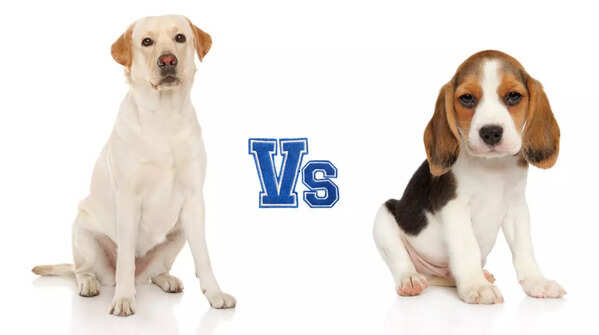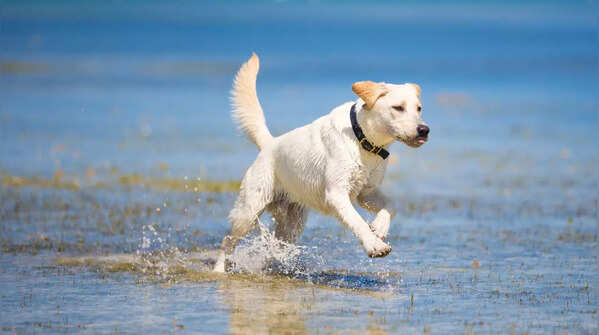
1/6
Labrador vs Beagle: Which is better for small spaces?
When it comes to choosing the right pet dog, there are a few things one needs to consider like-- temperament, nature, size, dietary needs, etc. And when it comes to people who live in apartments, the limited space they have also becomes a point to be considered. That's why choosing the right dog for apartment living can sometimes be tricky, especially when deciding between two popular breeds like the Labrador Retriever and the Beagle. While both the dog breeds are friendly, intelligent, and lovable companions, they have different needs and personalities that may— or may not— fit well in a smaller living space. So, if you live in an apartment and are confused between getting a pet Labrador or a Beagle, here are a few difference between the two which can help you pick the right do breed as a pet:

2/6
Size and space requirements
Beagles are small to medium-sized dogs, typically weighing between 9–13 kilos. Their compact size makes them well-suited for apartment living. They don’t take up much space and are comfortable lounging in small areas. Beagles can be happy in apartments as long as they get regular outdoor time to sniff and explore.
On the contrary, Labradors are large dogs, and they weigh around 25 to 36 kilos. While they can live in apartments, they need more space to move around due to their huge size. Their long legs and strong tails mean they may bump into furniture in tight areas. If you choose a Lab for apartment life, daily exercise and open outdoor access are a must.

3/6
Energy levels and exercise needs
Beagles have moderate energy levels and so, they are content with daily walks and some mental stimulation either by playing with toys or with their huamns. Beagles love sniffing and following scents, and so they enjoy going outdoors in parks.
Meanwhile, Labs are high-energy dogs and they need daily physical activity to stay happy and healthy. They require more than just walks— they love running, swimming, or long play sessions outdoors. This makes them a great addition to families with children or those who have an active lifestyle. Without enough exercise or play, Labs can become restless and even destructive in nature.

4/6
Barking and noise levels
Beagles are known for their loud and distinctive bark or howl— called a “bay.” They may bark when bored, excited, or if they sense something outside. This can be a probblem for those living in apartments as it can disturb one's neighbours. But, this can be managed when Beagles are trained early on in life.
Labradors are comparatively quieter than Beagles. They may bark to alert or when excited, but they’re less likely to howl or bark excessively.

5/6
Trainability and adaptability
Beagles are intelligent but independent thinkers. They have a strong sense of smell, which can easily distract them when outdoors or while training.
Labradors are also intelligent pet dog breeds, but due to their people pleasing nature they are one of the easiest breeds to train. They are also food-motivated, which makes them quick learners.

6/6
Grooming and shedding
Beagles have short, dense coats that shed moderately all round the year. They’re relatively low maintenance when it comes to grooming; they need brushing once a week to control their loose fur.
On the other hand, while Labradors also have short coats, they shed quite heavily— especially during seasonal changes. And so, they need regular brushing (i.e. atleast 2–3 times a week) to reduce shedding in the apartment.
Follow Us On Social Media

 2 days ago
56
2 days ago
56




























 English (US)
English (US)